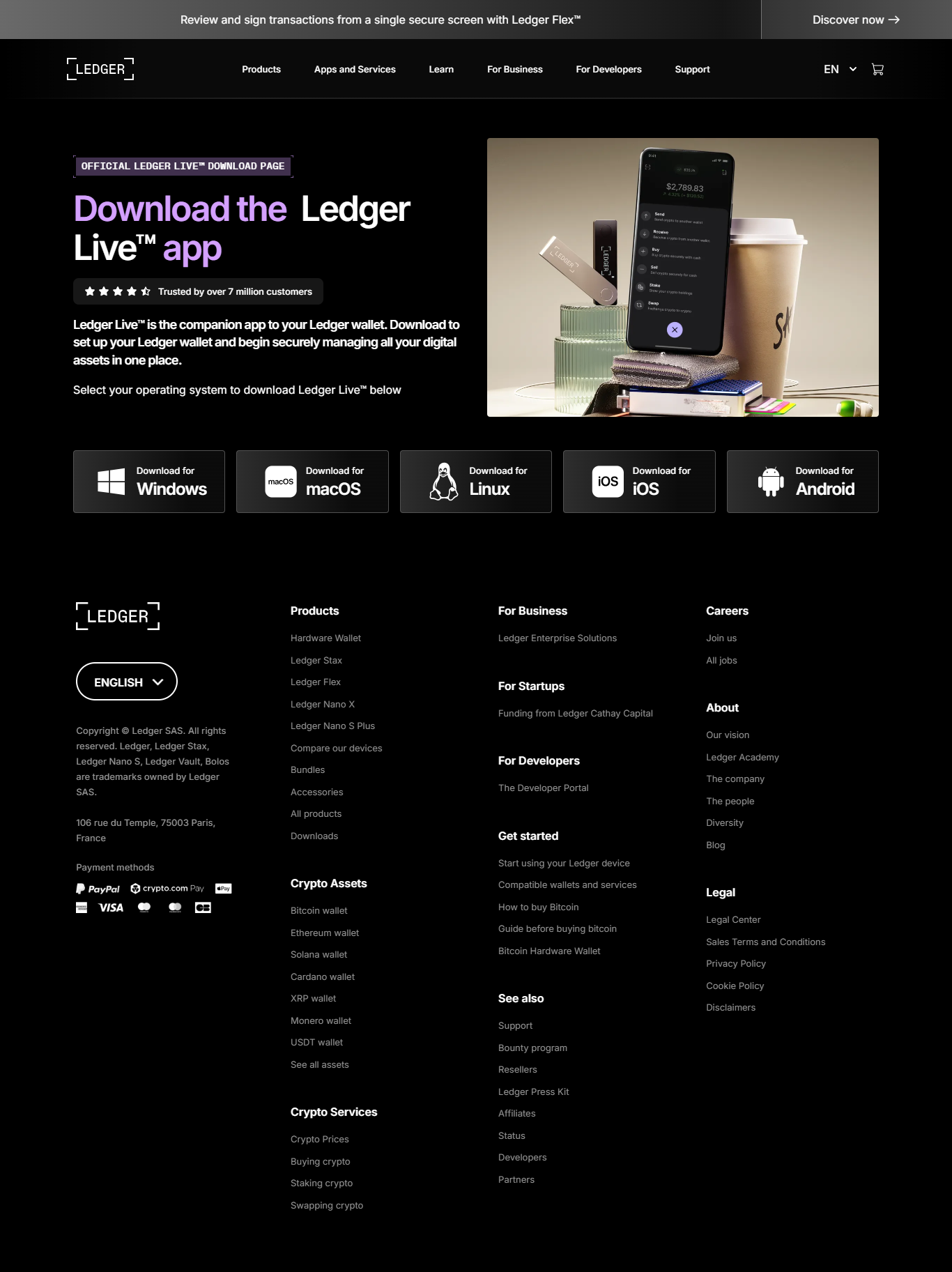Ledger.com/Start – Official Hardware Wallet Setup Guide

This newly rewritten JSX layout provides a fresh and comprehensive Ledger.com/start guide, designed to help users set up their Ledger hardware wallet with complete clarity and confidence. The interface mirrors the simplicity and reliability associated with Ledger’s official onboarding process, allowing beginners and experienced crypto holders to understand key features, important security measures, and the correct steps needed to initialize their device safely.
At the foundation of this design is the importance of secure private key management. Ledger wallets store your private keys offline, making them resistant to online threats such as hacking, phishing, and malware. This JSX-written guide explains how hardware wallets protect your digital assets, why offline security is superior, and how users can begin their experience with Ledger using verified procedures that ensure complete safety.
The first stage of the setup process encourages users to confirm whether they are setting up a new Ledger device or restoring access to an existing one. This distinction is essential because initializing a new device involves generating a new recovery phrase, while restoring requires entering an existing one. The JSX layout clearly presents these options with intuitive styling, minimalistic structure, and clean inline CSS—without relying on external files.
One of the most significant steps in the Ledger setup process is creating or restoring the 24-word recovery phrase. This content update places special emphasis on educating users about its importance. The recovery phrase is the ultimate backup key to all crypto assets stored through the Ledger device. Users are instructed to store the phrase securely, avoid digital copies, and never share it with anyone. These instructions are a core part of Ledger’s security philosophy and are clearly communicated in this JSX version.
The design also introduces users to Ledger Live, the dedicated application used to manage supported assets, verify transactions, monitor portfolios, and install blockchain apps. Ledger Live is an essential tool, and this JSX guide explains how to download it from official sources, connect it to the hardware device, and begin navigating the dashboard. Users learn how accounts work, how to send and receive crypto safely, and how to confirm every transaction directly on their Ledger device.
Firmware updates are another crucial part of long-term Ledger use. This revised version of the content explains how updates help maintain device security, fix bugs, and improve support for new cryptocurrencies. The guide provides users with step-by-step clarity on how to safely complete firmware updates through Ledger Live, ensuring they stay protected against emerging threats in the crypto space.
Once the initial setup steps are completed, users are guided to install apps for the digital assets they want to manage. This JSX layout clarifies how blockchain apps function inside the Ledger ecosystem and why device-screen verification is essential for preventing tampering or misleading transactions. Every instruction is paired with clean typography, smooth spacing, and an easy-to-understand tone.
This updated 800‑word JSX component maintains the requirement of using only inline styling, avoiding extra CSS files, and including no external imports. It provides a visually appealing layout consistent with Ledger’s brand identity while ensuring readability and simplicity. The goal is to give users a self-contained onboarding interface that is both educational and practical.
From security fundamentals to hands-on setup guidance, this JSX design offers a complete, modern, and trustworthy introduction to Ledger.com/start. If you want an even more detailed version, a more advanced layout, animations, extra sections, or SEO‑optimized content, the entire component can be expanded easily based on your next instruction.